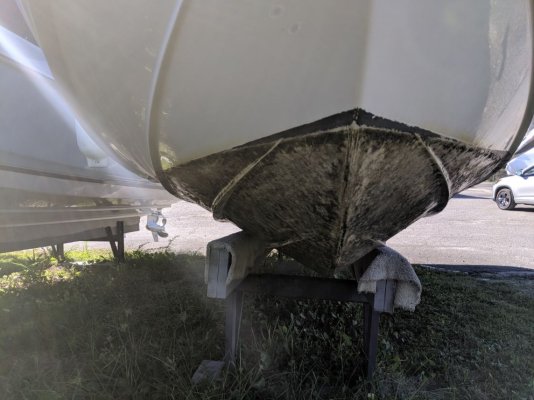Mark P
Senior Member
So took the boat out Thursday for annual maintenance, will pull drive, new zincs, filters, etc, etc. Thoughts on the bottom paint: Boat sits in salt water 24-7-365. Gets bottom cleaned by divers each month. Boat was new in May, 2017 with new bottom paint. From these pics, is it time for new paint? If so, what is best for a planing boat that sits in salt. Thanks




